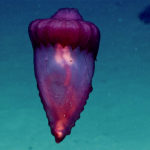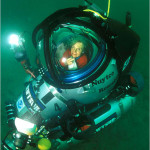Yesterday marked the 10th anniversary of Carl Sagan’s death (check out Joel Schlosberg’s Carl Sagan Memorial Blog-a-Thon). He was brilliant at motivating the passions of the public about the unexplored. In some sense Peter and I are trying to follow in his large footsteps to enspire this same passion about the deep sea.
Perhaps a testament to his life and far reaching influence, Baross and team in 2000 named a new species of archaea, Saganella. The microbe was isolated from water near a hydrothermal vent and was found to survive from room temperature to 90C (195F).
I think, however, what would have brought a larger smile to Carl’s face are discoveries from hydrothermal vents that broadened our knowledge about the condtions under which life can exist . Research and exploration of hydrothermal vents since the 1970’s has spoken to the origins of life on this planet and potentially others. The interface of cold and hot waters allow for unique chemical reactions to occur. Moreover, the extreme pressure, abundant UV radiation, and both methane and sulfide provide the necessary conditions to serve as a cradle of life in the deep depths of the ocean. Perhaps the most interesting finding was in 2005 (PNAS) by Beatty and other who found green sulfur bacteria at deep-sea hydrothermal vents that utilized thermal radiation instead of solar energy to drive photosynthesis.






Can you believe it, my high school biology teacher didn’t believe me there was a photosynthesis alternative in the deep seas. :)